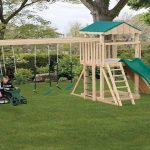A plunge pool is a small, shallow pool that is designed for relaxation, cooling off, and exercise. Australian homeowners are increasingly turning to plunge pools as a way to enjoy the benefits of a swimming pool without the need for a large amount of space or the high cost of maintenance.
Many people in Australia also go for DIY plunge pools as per their needs. Here are some key things to know about plunge pools for Australian homeowners:
Size and shape
Plunge pools are typically smaller than traditional swimming pools, with dimensions that range from around 2.5m x 2.5m up to 6m x 3m. The depth of a plunge pool is usually around 1.2m to 1.5m, which is deep enough to submerge yourself and cool off, but shallow enough that you can touch the bottom.
Plunge pools come in a range of shapes, including square, rectangular, circular, and oval. Some models are also available with built-in spa jets or seating areas for added relaxation.
Benefits
There are many benefits to owning a plunge pool in Australia. One of the main advantages is that it allows you to enjoy the benefits of a swimming pool without the need for a large backyard or the high cost of maintenance.
Plunge pools are also great for cooling off on hot summer days, and they can provide a refreshing space for exercise and relaxation.
In addition, plunge pools can add value to your home, as they are becoming increasingly popular with home buyers who are looking for a low-maintenance outdoor space.
Installation
Installing a plunge pool in Australia requires less time and effort than installing a traditional swimming pool, as it is smaller and requires less excavation work. However, it is still important to have the pool installed by a professional to ensure that it is safe and structurally sound.
The installation process usually involves excavating the area, pouring a concrete slab, installing the pool shell, and connecting the pool to your home’s filtration and heating systems. Depending on the complexity of the installation, the process can take anywhere from a few days to a few weeks.
Maintenance
While plunge pools are generally low-maintenance, they still require some upkeep to ensure that they remain clean and in good condition. This includes regular cleaning of the pool walls and floor, checking the pH and chlorine levels, and ensuring that the filtration and heating systems are working properly.
It is also important to cover the pool when it is not in use, especially during the winter months, to prevent leaves and debris from falling in.
Cost
The cost of a plunge pool in Australia varies depending on factors such as size, shape, materials, and installation costs. As a general rule, you can expect to pay anywhere from $10,000 to $30,000 for a basic plunge pool, with additional costs for features such as spa jets or seating areas.
While this may seem like a significant investment, it is important to remember that a plunge pool can add value to your home and provide years of enjoyment and relaxation.



